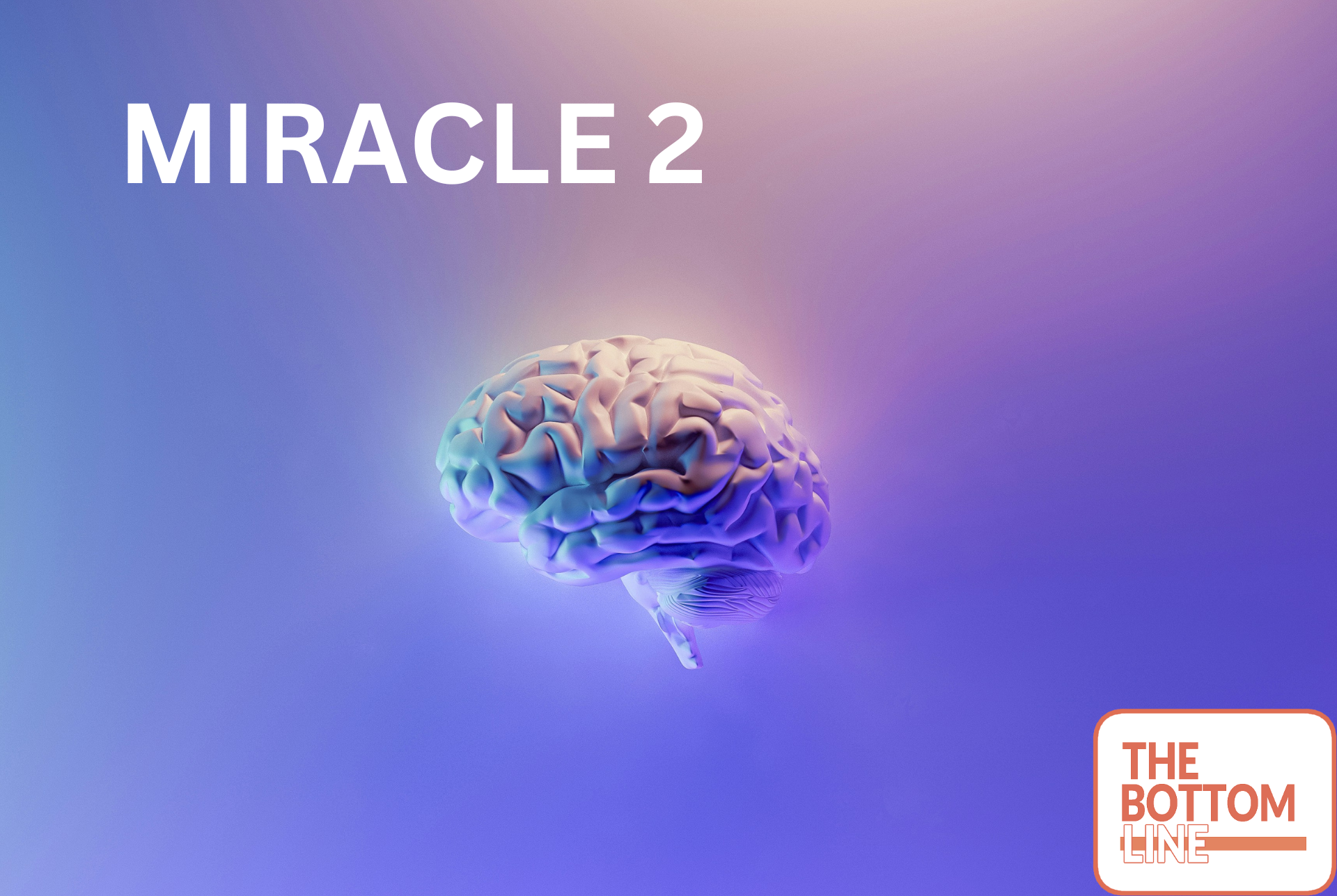Validation of the MIRACLE 2 Score for Prognostication After OOHCA

Validation of the MIRACLE2 Score for Prognostication After Out-of-Hospital Cardiac Arrest
Sunderland. @Nicksunderland5 2023. Interventional Cardiology; 18:e29. doi.org/10.15420/icr.2023.08
Clinical Question
- In patients with out-of-hospital cardiac arrest (OOHCA), how does the MIRACLE2 score compare with previously reporting scoring systems, for predicting poor neurological outcome at hospital discharge?
Background
- Out-of-hospital cardiac arrest has an ~8% survival to hospital discharge
- In those patients admitted to intensive care following an OOHCA ~50% survive, with the leading cause of death being hypoxic brain injury
- Current guidelines recommend prognostication after 72 hours following a cardiac arrest
- The MIRACLE2 score was developed to provide early prediction of neurological outcomes
- This study aimed to externally validate the MIRACLE2 score and compare it with other scoring systems
Design
- Retrospective cohort study
- Single centre
- All admissions screened for cardiac arrest ICD-10 codes
- Records were then manually reviewed
- No sample size calculation
Setting
- Single tertiary cardiac centre, UK, with 24 hour access to coronary angiography cardiac surgery and specialist intensive care services
- Dates of data collection: January 2019 – July 202
Population
- Inclusion:
- Adult patients
- Out-of-hospital cardiac arrest of presumed cardiac origin who had return of spontaneous circulation
- Exclusion:
- Died before hospital arrival
- Evidence of non-cardiac cause of arrest (respiratory arrest, suicide, trauma, drowning, substance overdose)
- Confirmed intra-cerebral haemorrhage
- Baseline neurological disability with Cerebral Performance Category (CPC) 3 or 4
- Co-morbidity leading to life expectancy <6 months
- Data from 682 patients analysed
- Exclusions
- Did not relate to new presentation of OHCA (n=321)
- Obvious non-cardiac cause for arrest (n=40)
- Dead on arrival (n=2)
- Paediatric (n=33)
- Life expectancy <6 months or significant prior neurological disability (n=11)
- Did not initially present to study centre ie. transferred in (n=28)
- No medical information available (n=35)
- After exclusions 219 patients included in validation cohort
- Complete data for calculating MIRACLE2 score available for 77% of patients. Missing data for pupillary response in 18% and initial pH in 6%
- Exclusions
- Comparing baseline characteristics of patients that had good (CPC 0-2) and poor neurological outcome (CPC 3-5) at hospital discharge
- Age: 60 vs. 71
- Male: 83% vs. 70%
- hs-cT (ng/l): 173 vs. 264
- ST elevation: 39% vs. 23%
- LV EF: 50% vs. 45%
- Witnessed arrest: 88% vs. 81%
- Zero-flow time (min), median (range): 0 (0-7.5) vs. 0 (0-20)
- Low-flow time (min), median (range): 17 (9-26) vs. 32 (20-45)
- Shockable rhythm: 96% vs. 57%
- Changing rhythms: 11% vs. 55%
- Any adrenaline dose: 32% vs. 92%
- Initial pH: 7.20 vs. 7.26
- Reactive pupils: 94% vs. 64
- Lactate 3.9 vs. 6.1mmol/l
- GCS motor score of 1: 57% vs. 93%
Test of Interest
- MIRACLE2 score – 7 variables with maximum score of 10 points
- Unwitnessed cardiac arrest (1 point)
- Non-shockable initial rhythm (1point)
- Changing rhythm (any 2 of VF, PEA, or asytole): 1 point
- Any adrenaline dose: 2 points
- No pupil reactivity at ROSC: 1 point
- Initial blood pH <7.2: 1 point
- Age
- ≤60 years: 0 points
- 61-80 years: 1 point
- >80 years: 2 points (in this paper it states that age >80 years gives a score of 2 points. This may be an error as the maximum total score would be 9 if given 2 points for age >80; and in the original derivation study age >80 was given a score of 3 points.)
Control Tests
- Cardiac Arrest Hospital Prognosis (CAHP) score
- Out-of-Hospital Cardiac Arrest (OHCA) score
- Target Temperature Management (TTM) score
Outcome
- Primary outcome: poor neurological recovery, defined as CPC 3-5 (severe disability to death) at hospital discharge
- Area under receiver operating curve for predicting poor neurological outcome at discharge
- MIRACLE 2: 0.93
- CAHP: 0.92
- OHCA: 0.83
- TTM: 0.94
- Good vs poor neurological outcome
- Low MIRACLE 2 score: ≤2, (n=89): 94% vs 6%
- Intermediate MIRACLE 2 score: 3-4 (n=66): 53% vs 47%
- High MIRACLE 2 score: ≥5 (n=64): 5% vs 95%
- MIRACLE2 score ≥5 predicted poor neurological outcome with a
- Specificity 97.5% (95% CI 93-99.5%)
- Sensitivity 62.3%
- +ve Likelihood Ratio 25.6 (95% CI 8.3-79)
- -ve Likelihood Raio 0.38
- MIRACLE2 score ≥3 predicted poor neurological outcome with a
- Specificity 68.9%
- Sensitivity 94.9% (95% CI 88.4-98.3%)
- +ve Likelihood Ratio 3.05
- -ve Likelihood Ratio 0.07 (95% CI 0.03-0.18)
- Secondary outcomes:
- Area under curve for predicting poor neurological outcome at 6 months
- MIRACLE 2: 0.93
- CAHP: 0.92
- OHCA: 0.86
- TTM: 0.94
Authors’ Conclusions
- “The MIRACLE2 score demonstrates good prognostic performance and is easily applicable to cardiac-origin OHCA presentation at the hospital front door. Prognostic scoring may assist decision-making regarding early angiographic assessment.”
Strengths
- Screening of all admissions
- Compared with 3 other scoring systems
Weaknesses
- Only 64 patients included with MIRACLE2 score ≥5
- Single centre
- Retrospective
- Number of patients had missing data
The Bottom Line
- The MIRACLE2 score reported high accuracy for determining neurological prognostication at admission. However due to this being a single centre retrospective validation cohort with only small numbers of patients that had a high MIRACLE 2 score, and >20% of patients having missing data, decisions regarding treatment or escalation should not currently be made solely on the MIRACLE 2 score at admission
External Links
- article Validation of the MIRACLE2 Score for Prognostication After Out-of-hospital Cardiac Arrest
- further reading https://rebelem.com/miracle2-risk-score-for-early-prediction-of-neurologic-outcome-in-out-of-hospital-cardiac-arrest/
Metadata
Summary author: @davidslessor
Summary date: 11/03/24
Peer-review editor: Jonarthan Thevanayagam
Photo by Milad Fakurian on Unsplash



